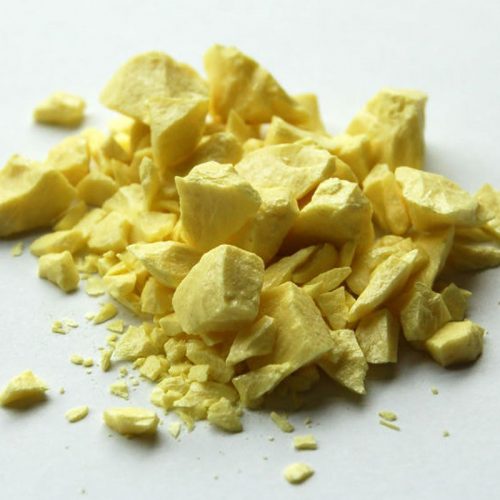
Sulfur has been known and used since ancient times. Its color is pale yellow and it is very light and soft. This element smells similar to rotten eggs when combined with hydrogen. Sulfur burns with a blue flame and emits a strange odor. It is insoluble in water but soluble in carbon disulfide (carbon dioxide). Sulfur has many forms in all liquid, solid and gas states, the relationship between which is not yet fully understood.
The element sulfur is found in nature in its natural and pure form, or in the form of sulfide and sulfate compounds along with other metallic and non-metallic elements. According to the crystallization system, this type of sulfur is in the form of alpha sulfur (rhombic or octahedral), beta sulfur (monoclinic or prismatic), gamma sulfur (plastic) and amorphous sulfur (colloidal).

The appearance of this non-metallic is pale yellow, which is very light and soft. When combined with hydrogen, it has a distinctive odor that resembles that of a rotten egg. Sulfur burns with a blue flame and emits a strange odor (see image). Sulfur does not dissolve in water but dissolves in carbon disulfide (carbon dioxide). The typical oxidation states of this element are 2- and +2 and +4 and +6, which are 2- and +4 reducing and tend to reach +6, which is more stable, and +4 and +6 states do not follow the octahedral rule. Sulfur has many forms in all liquid, solid, and gaseous states, the relationship between which is not yet fully understood. Crystalline sulfur is shown as S8 sulfur ring.
Sulfur is an important nutrient for plants that has not received much attention in agriculture. Sulfur, or chemical symbol S (S), is one of the 17 essential nutrients for plant growth and development, making it the fourth most important nutrient after nitrogen, phosphorus and potassium. Sulfur plays key roles in plant metabolism